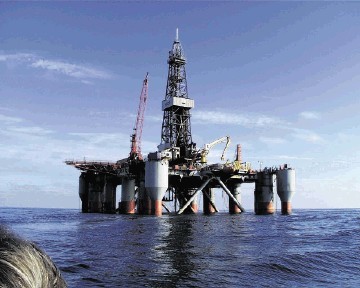
Statoil is preparing to drill two UKCS wells in the Spring . . . one in the Catcher area of the Central North Sea and the other in the Northern North Sea immediately to the west of the company’s Mariner field.
The Catcher prospect, known as Wall, is a sizeable target which, if the pre-drill estimate is achieved, could be the herald of a standalone development.
The Mariner area prospect is known as Boatswain and could add around 40million barrels of recoverable oil (median case), so enhancing the economics of the current Mariner development. Moreover, it could open up a fairway to the west and offer the potential for further reserves upgrades.
The company is bringing the semi-submersible Songa Trym from the Norwegian sector to conduct the campaign, which is expected to take 55-60 days subject to weather and drilling conditions. Each should be of 28-30 days duration.
The plan is to spud late next month and there is sufficient flexibility in the programme to enable further drilling should the Songa Trym hit pay-dirt.
“If Wall (28/15) is a success then we will drill Hadrian next!” said Statoil East North Atlantic VP exploration Tom Dreyer. “Then we will have Hadrian’s Wall!
“The geological target of Wall is currently classified but it has stand-alone potential should expectations be realised.”
Boatswain is expected to be much like Mariner and Dreyer expects to encounter hydrocarbons in the same two reservoir sections that characterise the Mariner discovery . . . the Heimdal and Maureen formations.
“Boatswain is, we hope, an extension of the Mariner field westwards. It could provide Mariner with more resources, thereby making the project stronger,” said Dreyer.
“The pre-drill estimate is around 40million barrels recoverable . . . that’s the mid-range figure. It could be a lot bigger. It could be a decent add-on to Mariner.
“I can also give you one other piece of information and that is, if Boatswain works, we shall use that information to look for even more similar prospects in the area. That is dependent on shooting new seismic.
“The intention is that this campaign be shot in the Spring this year. If it’s successful then perhaps we can add a well to our (Mariner) drilling programme, maybe in 2017. But it does depend on Boatswain’s success. We can’t prove any additional Mariner-like potential based on the current data. We hope that shooting new seismic will reveal a continuation of the trend; that we can find more Boatswains in the area.”
Dreyer wants to shake up exploration on the UK Continental Shelf where he sees companies doing the same old, same old, when it comes to exploration with little or no lateral thinking.
“On the UKCS over the past 20 years people have been focused on the same things and have left a lot of areas quite untouched,” said Dreyer.
He explained that Statoil had held UK acreage since the late 1990s but that it is only recently that the company has pursued licences as operator.
Catalyst to the shift is of course the company’s 2007 acquisition of the majority stakes in and therefore operatorship of the Mariner and Bressay heavy crude fields.
Dreyer thinks fresh thinking and application of different technologies and analytical techniques could yield hydrocarbon discoveries that might otherwise not be spotted.
“Around 2010, we had a lot of successes on the Norwegian side which were made possible by technological advances,” he said, referring to Johan Sverdrup. “The time is right to try those techniques on the UK side as well.
“The recently awarded (28th Round) acreage has two objectives . . . to support Mariner and Bressay (block 9/11 and block 9/3) and to do our own testing of the exploration potential based on the techniques that gave us the Johan Sverdrup discovery (Avaldsnes/Aldous) . . . seismic imaging in particular.”
Returning to the Catcher area, block 28/9 had been ignored for many years because of low API concerns, perceived lack of reservoir, long distant migration, no analogues and just too many anomalies.
The block is located on the Western Platform of the Central Graben where the water depth is about 90m (300ft).
However, it took 12 years of exploration activity beginning in 1998 with the identification of an interesting seismic amplitude on sparse 2D data that led to the award of 28/9 in the 18th UK Licensing Round to a group comprising PanCanadian, Amerada Hess and Rigel.
After three unsuccessful wells in the surrounding area, block 28/9 was relinquished. It was then acquired by EnCore Oil in consortium with Nautical Petroleum and Oilexco in the 24th Round in 2006.
EnCore Oil’s CEO Alan Booth, who was apparently the main driving force behind the Buzzard field success story, appears to have driven Catcher too.
In May 2010, the company drilled the 28/9-1 Catcher discovery well which led to the drilling of three more vertical wells and three associated side-tracks, all of which encountered hydrocarbons, proving up about 300million barrels oil equivalent.
Further targets have since been derisked by Premier Oil, which acquired EnCore in late 2011. They include Burgman (2011), Carnaby (2012) and Bonneville (2013).
Statoil was awarded three blocks in the Catcher area in October 2012. Together with Nexen and on behalf of a group of five partners, the plan then was to drill “at least three exploration wells in the coming years”. Nexen drilled the Kookabrra prospect last year, but this was a duster.
On the UKCS over the past 20 years people have been focused on the same things and have left a lot of areas quite untouched
Recommended for you
